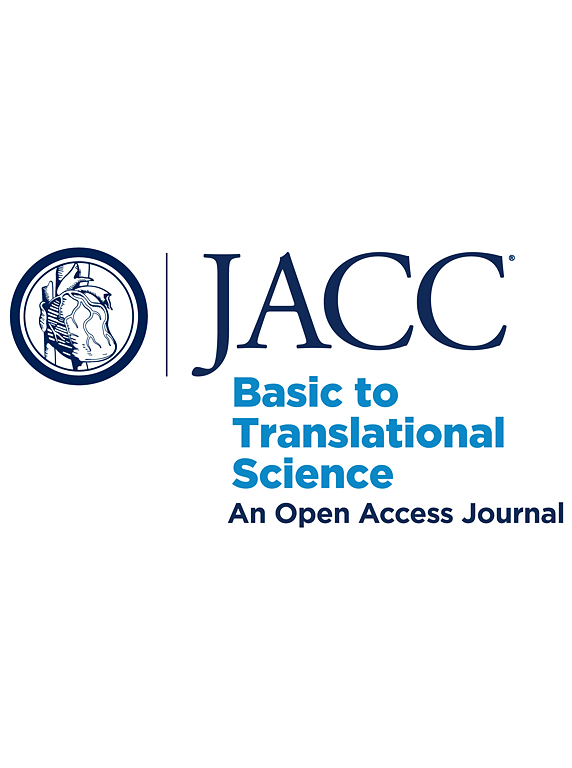脱细胞组织工程血管作为冠状动脉旁路移植术
IF 8.4
1区 医学
Q1 CARDIAC & CARDIOVASCULAR SYSTEMS
引用次数: 0
摘要
冠状动脉旁路移植术(CABG)使用患者的乳腺内动脉和隐静脉;然而,无法获得或质量差的自体血管限制了血运重建。本研究通过在灵长类动物模型中评估小直径脱细胞组织工程血管([sdATEV], 3.5 mm),解决了替代CABG导管的关键需求。成年狒狒(n = 5)采用sdATEV进行右冠状动脉(RCA)冠脉搭桥。通过计算机断层血管造影纵向评估血管的通畅度、内径和心功能。在为期6个月的研究中,所有sdatev都保持专利状态。计算机断层血管造影显示,远端sdATEV直径逐渐重塑,接近较小的狒狒RCA。组织学和空间转录组学显示,sdATEV与宿主内皮细胞和平滑肌细胞再细胞化,包括一个与RCA相似的静止新介质层,表明宿主细胞从旁路冠状动脉向内生长调节sdATEV直径。这些结果表明sdATEV是一种耐用的替代CABG导管。本文章由计算机程序翻译,如有差异,请以英文原文为准。
Acellular Tissue Engineered Vessels as Coronary Artery Bypass Grafts
Coronary artery bypass graft (CABG) uses the patient’s internal mammary artery and saphenous vein; however, unavailable or poor quality autologous vessels limit revascularization. This study addresses the critical need for alternative CABG conduits by evaluating a small diameter acellular tissue-engineered vessel ([sdATEV], 3.5 mm) in a primate model. Adult baboons (n = 5) underwent CABG to the right coronary artery (RCA) with an sdATEV. Patency, diameter, and cardiac function were longitudinally assessed by computed tomography angiography. All sdATEVs remained patent throughout the 6-month study. Computed tomography angiography demonstrated that the distal sdATEV diameter gradually remodeled to approximate the smaller baboon RCA. Histology and spatial transcriptomics revealed that sdATEVs recellularized with host endothelial and smooth muscle cells including a quiescent neomedia layer with gene expression patterns similar to the RCA, indicating that host cell ingrowth from the bypassed coronary artery regulates sdATEV diameter. These results suggest that the sdATEV is a durable alternative CABG conduit.
求助全文
通过发布文献求助,成功后即可免费获取论文全文。
去求助
来源期刊

JACC: Basic to Translational Science
CARDIAC & CARDIOVASCULAR SYSTEMS-
CiteScore
14.20
自引率
1.00%
发文量
161
审稿时长
16 weeks
期刊介绍:
JACC: Basic to Translational Science is an open access journal that is part of the renowned Journal of the American College of Cardiology (JACC). It focuses on advancing the field of Translational Cardiovascular Medicine and aims to accelerate the translation of new scientific discoveries into therapies that improve outcomes for patients with or at risk for Cardiovascular Disease. The journal covers thematic areas such as pre-clinical research, clinical trials, personalized medicine, novel drugs, devices, and biologics, proteomics, genomics, and metabolomics, as well as early phase clinical trial methodology.
 求助内容:
求助内容: 应助结果提醒方式:
应助结果提醒方式:


